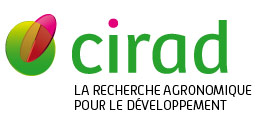Effect of environment and fallow period on Cosmopolites sordidus population dynamics at the landscape scale
Duyck P.F., Dortel E., Vinatier F., Gaujoux E., Carval D., Tixier P.. 2012. Bulletin of Entomological Research, 102 (5) : p. 583-588.
Understanding how the population dynamics of insect pests are affected by environmental factors and agricultural practices is important for pest management. To investigate how the abundance of the banana weevil, Cosmopolites sordidus (Coleoptera: Curculionidae), is related to environmental factors and the length of the fallow period in Martinique, we developed an extensive data set (18,130 observations of weevil abundance obtained with pheromone traps plus associated environmental data) and analysed it with generalized mixed-effects models. At the island scale, C. sordidus abundance was positively related to mean temperature and negatively related to mean rainfall but was not related to soil type. The number of insects trapped was highest during the driest months of the year. Abundance of C. sordidus decreased as the duration of the preceding fallow period increased. The latter finding is inconsistent with the view that fallow-generated decomposing banana tissue is an important resource for larvae that leads to an increase in the pest population. The results are consistent with the view that fallows, in association with pheromone traps, are effective for the control of the banana weevil.
Mots-clÃĐs : cosmopolites sordidus; dynamique des populations; musa; facteur du milieu; facteur climatique; sÃĐcheresse; prÃĐcipitation; tempÃĐrature; jachÃĻre; pratique culturale; paysage; gestion intÃĐgrÃĐe des ravageurs; lutte intÃĐgrÃĐe; piÃĐgeage des animaux; phÃĐromone sexuelle; martinique; france
Documents associÃĐs
Article (a-revue à facteur d'impact)
Agents Cirad, auteurs de cette publication :
- Carval Dominique — Persyst / UPR GECO
- Duyck Pierre François — Bios / UMR PVBMT
- Tixier Philippe — Persyst / UPR GECO
